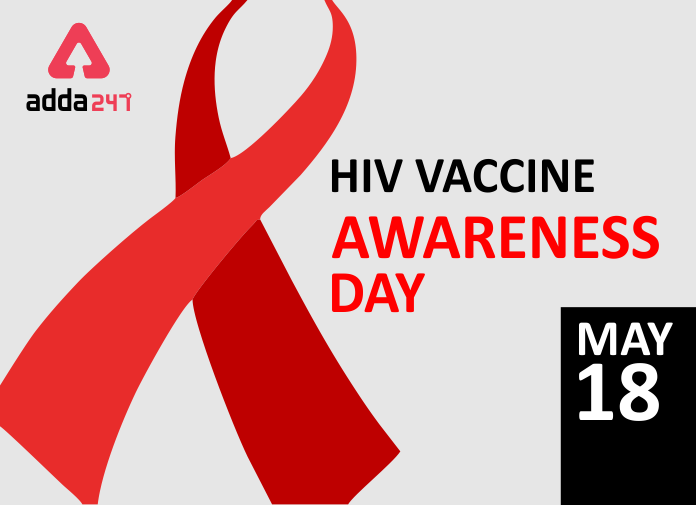Table of Contents
HIV Vaccine Awareness Day (HVAD) is observed globally on 18 May every year. This day is also known as World AIDS Vaccine Day. This day provide an opportunity to educate communities about the importance of preventive HIV vaccine research. As effective and safe preventive HIV vaccine will help to end the HIV pandemic. National Institutes of Health’s National Institute of Allergy and Infectious Diseases (NIAID) leads this observance.
Also Check,
- IMF releases “World Economic Outlook”
- GoI reviews extant Foreign Direct Investment (FDI) policy
- Impact of Energy Efficiency Measures For Year 2018-19
This day is a chance to thank the volunteers, community members, health professionals, and scientists working together to find a safe and effective preventive HIV vaccine. It is also a time to educate communities about the importance of preventive HIV vaccine research. The aim of the activities is to raise awareness of the need for AIDS vaccines and to educate people about how HIV can be prevented. Ordinary people are reminded that they can also play a part in ending the pandemic. According to WHO, 37.9 million [32.7–44.0 million] people were living with HIV at the end of 2018.
Also Read,
| List of Presidents | List of Prime Ministers | Largest State of India | Governers of RBI |
| What is PMJDY ? | List of Cabinet Ministers | National Security Act | Chief Election Commissioner of India |
History of HIV Vaccine Awareness Day
The World AIDS Vaccine Day or HIV Virus Awareness Day is observed by the National Institute of Allergy and Infectious Disease (NIAID). The concept of this day is rooted in a May 18 speech by then US President Bill Clinton. He aimed at setting new goals for developing a vaccine given the advancement in science and technology, within the next decade. The first World AIDS Vaccine Day was observed in 1998 to commemorate the first anniversary of Clinton’s speech.
Atal Pension Yojana (APY) completes 5 years of implementation
What is HIV?
HIV stands for human immunodeficiency virus. HIV is a virus that attacks cells within the immune system ,which is our body’s natural defence against illness. The virus destroys a kind of white blood corpuscle within the immune system called a T-helper cell, and makes copies of itself inside these cells. T-helper cells also are mentioned as CD4 cells. As HIV destroys more CD4 cells and makes more copies of itself, it gradually weakens a person’s system. This means that somebody who has HIV, and isn’t taking antiretroviral treatment, will find it harder and harder to repel infections and diseases.
Symptoms of HIV infection:
- Enlarged glands
- Sweating particularly at night
- Red rashes in the body
- Tiredness
- Weakness
- Unintentional Weight loss etc.
- Fever
- Joint Pain
- Chills
- Muscle pain
- Sore throat
HIV is transmitted in the body through:
- Vaginal secretions
- Anal fluids
- Breast milk
- Blood
- Semen
Endangered Species Day 2020
What is AIDS?
AIDS stands for acquired immune deficiency syndrome. AIDS is a set of symptoms (or syndrome as against a virus) caused by HIV. An individual is claimed to possess AIDS when their immune system is just too weak to repel infection, and that they develop certain defining symptoms and illnesses.
This is often the last stage of HIV, when the infection is extremely advanced, and if left untreated will cause death. It’s also called advanced HIV infection or late-stage HIV. AIDS is a set of symptoms and illnesses that develop as a results of advanced HIV infection which has destroyed the system.
Click Here to Register for Bank Exams 2020 Preparation Material
Practice With,



 Adda247 Launched the Coaching with Degre...
Adda247 Launched the Coaching with Degre...
 Financial Regulators In India
Financial Regulators In India
 What is the Monthly Salary of Bank PO?
What is the Monthly Salary of Bank PO?


